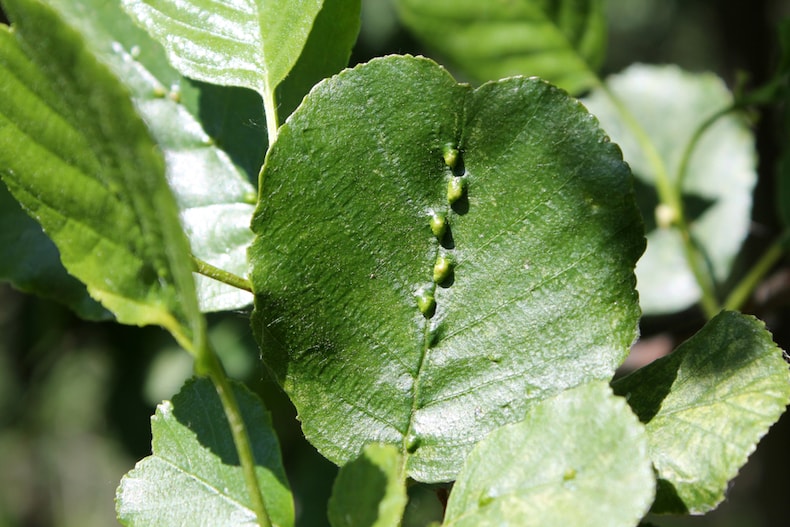Garden pests - Gall mites

Unsightly growths on your plants could signal a gall mite infestation
Image: Muddy knees/Shutterstock
If you’re concerned about abnormal growths on your plants, it’s possible you have a gall mite infestation.
What are gall mites?

The damage sap-sucking Gall mites leave behind is very clear
Image: joppek/Shutterstock
Gall mites are microscopic, cigar-shaped animals that cause abnormal growths (or galls) on some plants.
They feed by sucking plant sap. As they feed they secrete chemicals into the plant that affects the parenchyma cells, causing them to produce a gall. This is beneficial to the mites, who then suck (the even more nutritious) sap from the cells lining the gall itself.
Most species of gall mite overwinter as females on host plants in bark crevices. As soon as the host plant comes into growth in the spring, gall mites start feeding and laying eggs. There might be three generations of gall mite over the course of a summer.
How do I recognise gall mite damage?

Different gall mite varieties have their own particular set of symptoms
Image: Kazakov Maksim/Shutterstock
These two-legged mites are only 0.2mm long, so they’re not visible with the naked eye. But the growths they cause on plants are very distinctive.
There are many species of gall mite - each causing its own particular set of additional symptoms. But typically, gall mite damage can look like:
- Excessive hairiness of leaves
- Enlarged buds
- Blistered foliage
- Hard, raised bumps on the surface of leaves
What do gall mites eat?
Gall mites are usually host specific, so each species will only feed on one plant species (or a few that are closely related).
There are gall mites specific to apple, beech, birch, hazel, plum, sycamore, walnut trees and more besides.
How can I control gall mites?

Remove the galls and affected leaves of plants if you have a light infestation
Image: Kazakov Maksim/Shutterstock
Gall mites don’t damage the health of plants so control isn’t necessary.
If your affected plant has a light infestation, you can remove the galls and any affected leaves or shoots. But if the plant is heavily affected removing damaged leaves will harm your plant, so they’re best left alone.
Your gall mite questions
What are the grey fluffy growths on my mock orange?
I cut a small piece and it’s bright green inside.
This is unusual but it could be some sort of gall, which is an abnormal growth of plant tissue formed in response to a wound or insect activity. As you mentioned that the flesh was bright green when you cut into it, it is unlikely to be a fungal or bacterial infection.
It could be the activity of gall mites. It is common to see galls forming in spring due to the egg-laying activities of the mites. Although they look unsightly, gall mites rarely harm the plant. If you only have a few galls you can simply remove the affected shoots - there are no effective chemical controls.
If this isn't feasible you can just leave the galls as they are, they won't hurt your mock orange.







